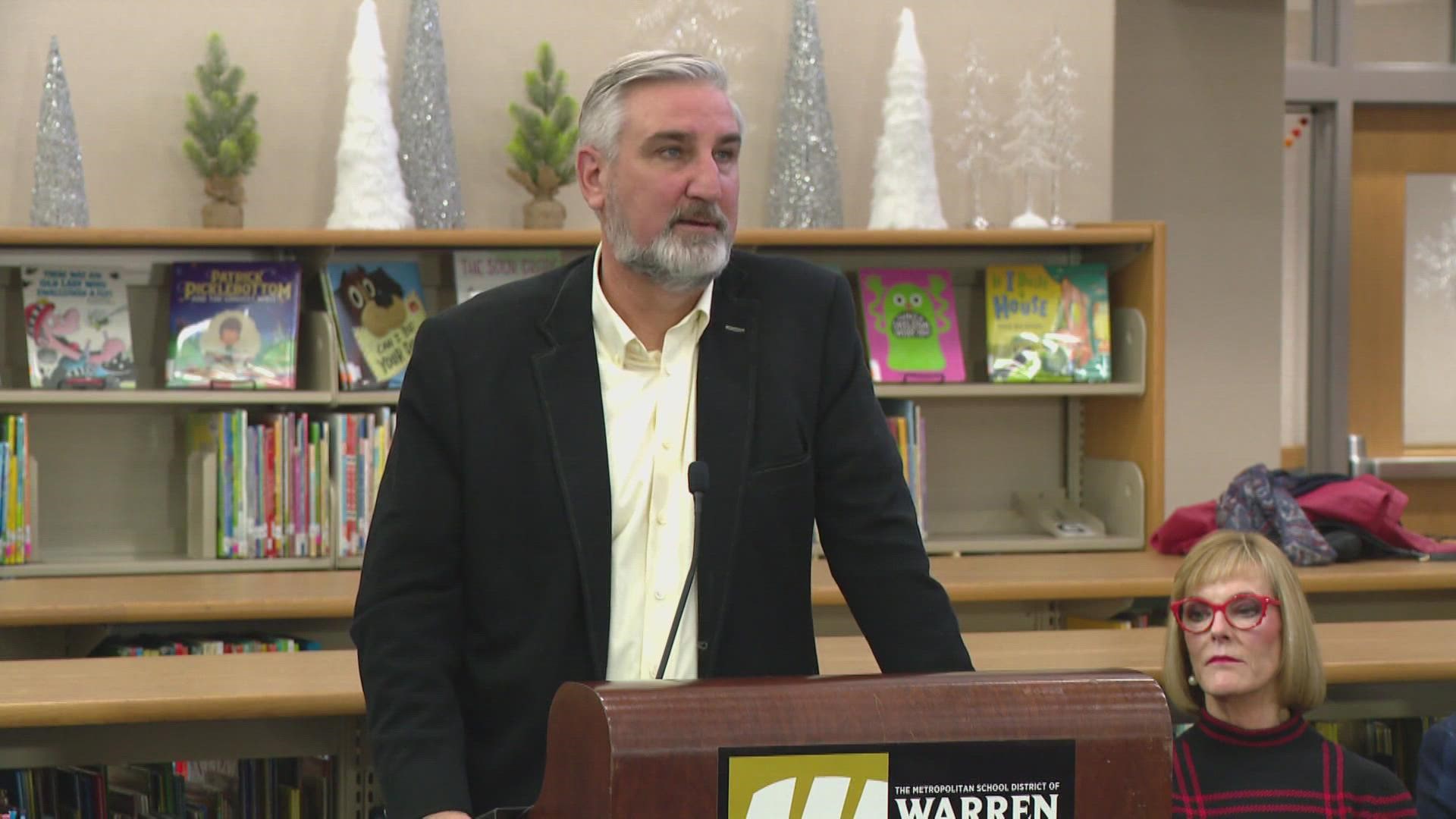INDIANAPOLIS — Indiana schools would see a 6% funding boost next year and textbook fees for public school students would be eliminated under state spending plans announced Wednesday by Gov. Eric Holcomb.
The Republican governor’s plan would give K-12 schools their largest funding increase in more than a decade amid worries about an expected slowdown in the growth of state tax collections. Holcomb’s proposal includes several other big-ticket items, such as nearly $350 million over the next two years toward a major funding increase for public health programs and $500 million for a new round of regional economic development grants.
The governor's proposals come as the Republican-dominated Legislature is set to start its 2023 session on Monday with the adoption of a new two-year state budget by late April as its primary focus.
The double-digit jumps in state tax collections over recent years are projected to slow to about 3% the next two years, prompting some Republican legislative leaders to question how much spending can be increased on schools and other areas.
Holcomb said multiple times during the presentation of his plan that he believed the state had the “financial wherewithal” to pay for the proposals. He noted there is still an annual budget surplus.
“This is a bold agenda that hits on topics that, again, are needed,” Holcomb said. “They’re not just a wish list. These things are needed.”
Top Republican legislators released statements generally supportive of Holcomb’s proposals while emphasizing what House Speaker Todd Huston called “unwavering dedication to fiscal responsibility.”
“We’ll build on that track record and maintain our focus on funding critical services and making strategic, one-time investments that deliver results for Hoosiers — all while keeping government small,” Huston said.
Holcomb’s proposal calls for a 6% increase in K-12 and university funding for the 2023-24 school year, followed by an additional 2% boost the following year. That follows increases of about 4.5% each of the last two years, but those increases trail the national inflation rate that hit a peak of 9.1% in June.
He called for eliminating fees for textbooks and other classroom materials for all public school students by directing $120 million more toward local schools to expand the current program covering such fees for children from low-income families. Indiana is among a handful of states still allowing textbook fees, which Democrats and many education advocates have long criticized as an unfair extra cost to families.
The extra school money comes with the goal of boosting the statewide average teacher pay to at least $60,000 a year, about $3,000 higher than the average for last school year.
Indiana’s teacher pay has lagged behind national averages for many years and school districts across the state have struggled to fill open teaching positions.
The state’s largest teachers union expressed support for Holcomb’s proposal.
“We are pleased to see that Gov. Holcomb recognizes that we need to continue to build upon our prior funding increases for public schools so that we can begin to address some of the root causes of our educator shortage crisis,” Indiana State Teachers Association President Keith Gambill said.
Holcomb said increased public health funding is another top priority in order to improve Indiana’s poor national rankings in areas such as obesity, smoking and life expectancy.
The governor’s plan would direct $100 million in the budget’s first year and $200 million in the second year toward boosting Indiana’s county public health department funding from its current 45th national ranking to the national average. The state now directs about $7 million a year to county health departments, which are primarily funded by local taxes.
“We need to get healthier as a state, there’s just no two ways about it,” Holcomb said.
A commission appointed by Holcomb recommended a $240 million annual boost to lift funding for county public health departments to the national average, but the governor said time was needed to “build the structure” for expanded health programs.

